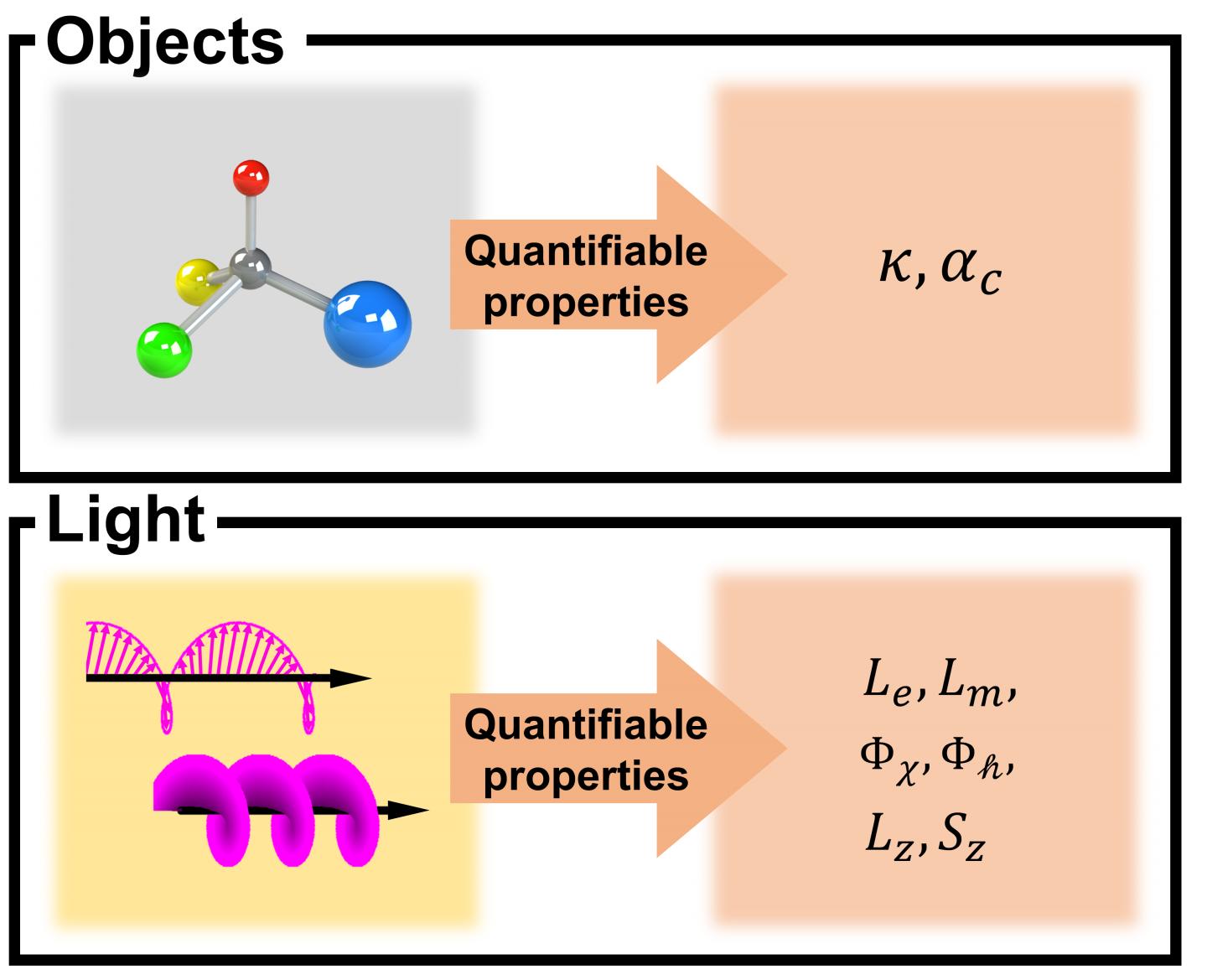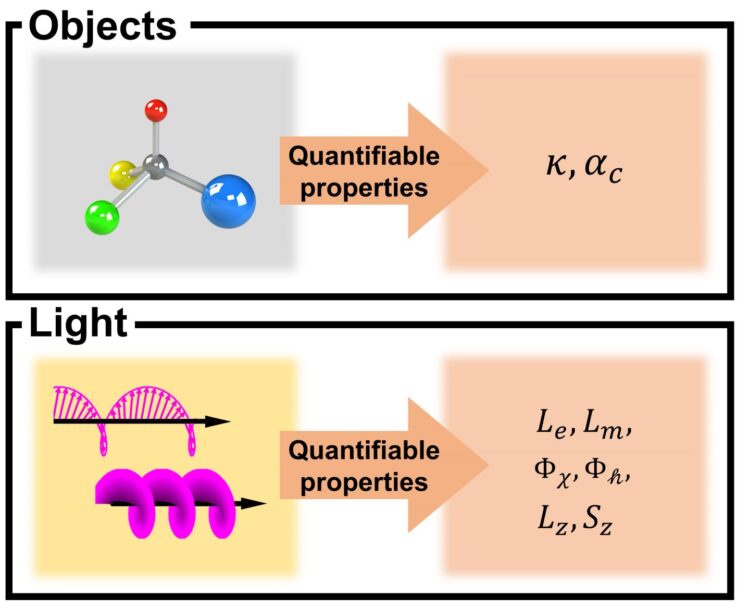
Credit: by Jungho Mun, Minkyung Kim, Younghwan Yang, Trevon Badloe, Jincheng Ni, Yang Chen, Cheng-Wei Qiu, and Junsuk Rho
Recent advancements in artificial nanomaterials and structured optical fields have expanded the concept of chiroptical phenomena. However, chiroptical phenomena originate from complicated processes involving transitions between states with opposite parities, so fundamentals of chiroptical processes are required for solid interpretation the phenomena. Here, theoretical frameworks on chiroptical properties of electromagnetic materials are discussed in the context of microscopic (discrete chiroptical scatterers) and macroscopic (continuous chiroptical media) systems.
“Chiral object refers to a three-dimensional object that cannot be superimposed onto its mirror image using only translations and rotations. Such chiral objects interact differently with left- and right-circularly polarized lights, and absorption difference at these two circular polarizations (circular dichroism) has been widely used to characterize chiroptical properties of the chiral objects. However, (geometric) chirality is a qualitative property; that is, we do not say one’s hand is more chiral than another’s hand. On the other hand, observed chiroptical effects are measurable quantities. By introducing chiroptical parameters, the chiroptical effects can be described and the degree of electromagnetic chirality can be defined and quantified.”
Additionally, chiroptical properties of electromagnetic fields are discussed in the context of local density of field chirality and its flux, which have been defined as the optical chirality and optical helicity. Also, helical beams with intrinsic orbital angular momentum are discussed as another class of chiral light.
“Generally speaking, a chiral phenomenon involves two chiral objects, where one chiral object differently interacts with another chiral object and its enantiomer (mirror image). In chiroptical phenomena, one of the chiral objects is the light itself. By recognizing that light can also be chiral, the degree of chirality of the field can also be quantified.”
Several chiroptical phenomena are discussed under the framework of using the identical chiroptical parameters of the fields and materials. This approach provides a clear understanding of several chiroptical phenomena including intrinsic and extrinsic chirality, enantioselective scattering, molecular sensing, and optomechanical effects. This review paper will be helpful to understand complicated chiroptical phenomena and for designing and optimizing chiroptical systems and fields with well-defined figure of merit.
###
Media Contact
Junsuk Rho
[email protected]
Related Journal Article
http://dx.





